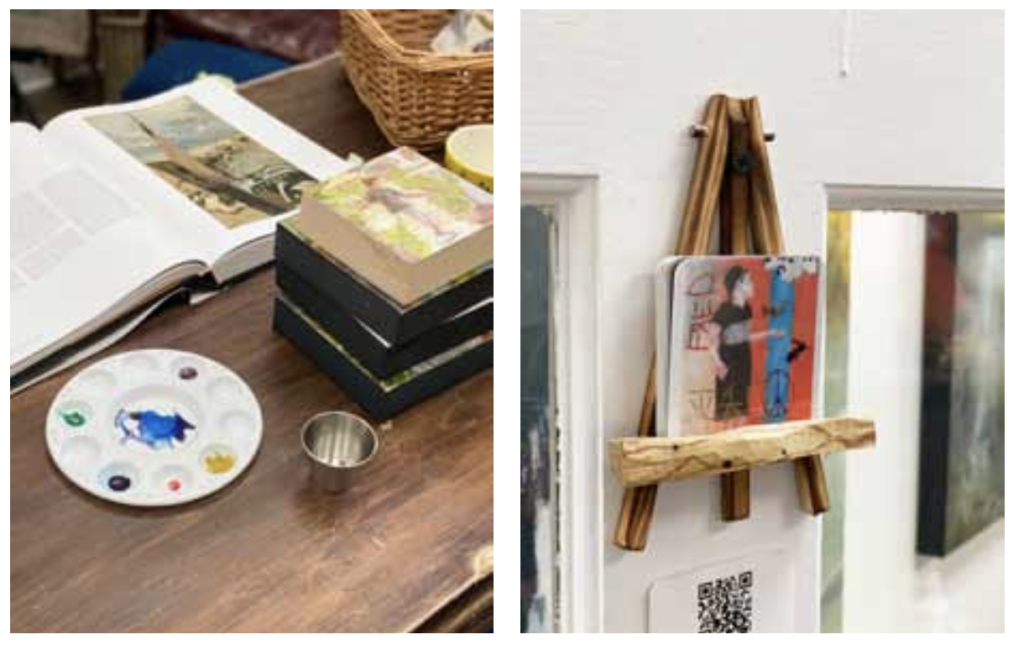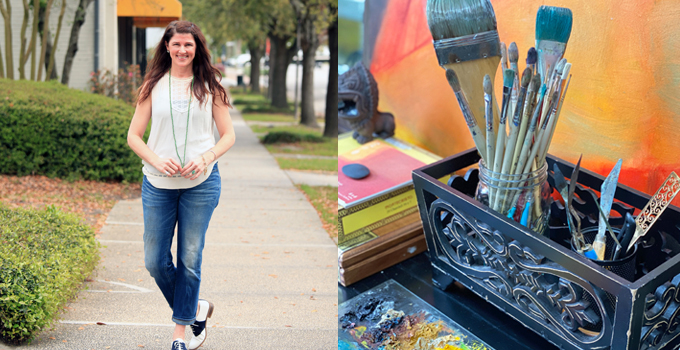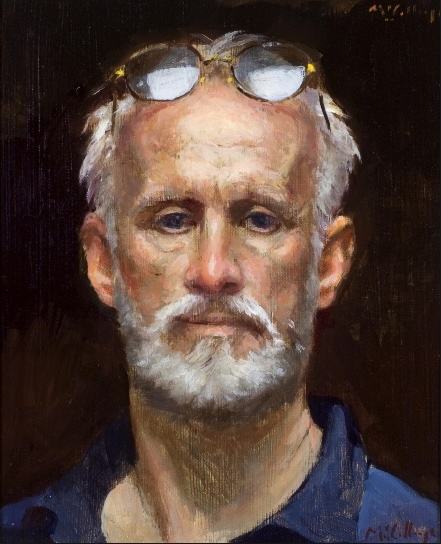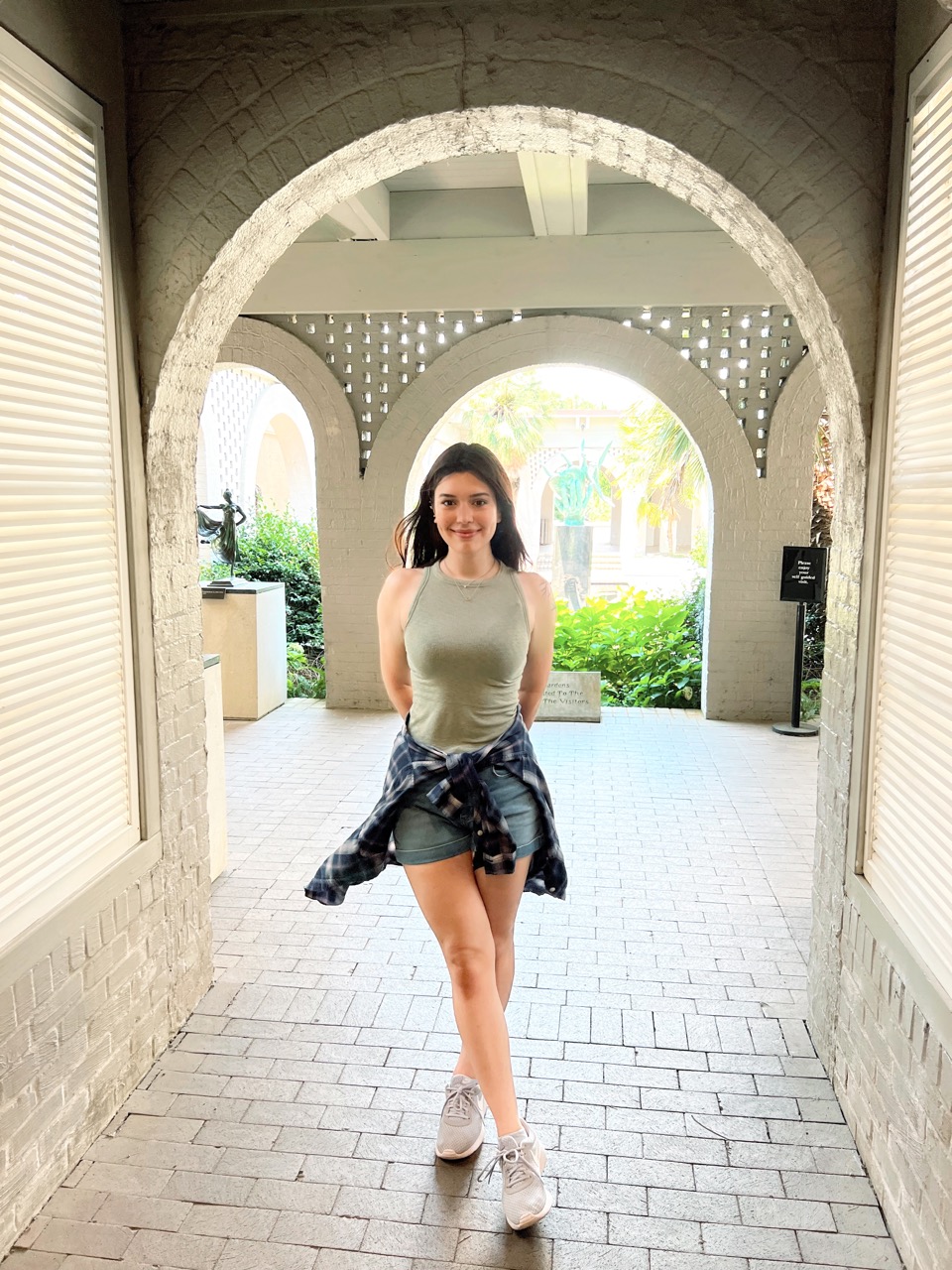For Stephanie Drawdy, art and the pursuit of justice is everything.
How rare it is to find someone whose life is shaped wholly around a core passion; whose thoughts and actions over the span of years and decades revolve around a singular focus; who lives and breathes that which moves their spirit. Stephanie Drawdy is one such person, and the beacon of her life’s journey is—and has always been—art, with a strong focus on human rights and justice.
Growing up in the Charleston area, Drawdy knew from a young age that she wanted her life to include creative pursuits, and she gravitated toward painting. Though she did not know any artists personally or have any artistic role models in her life, her parents did send her to classes at the Gibbes Museum downtown when she expressed interest in developing her skills. Even when techniques did not come naturally to her, she always kept her goal in sight.
“I never really questioned if being an artist is what I should be doing, even when I wasn’t good at it,” Drawdy recalls. “I just kept going, because I knew it was what I wanted to do, and I knew I would get there.”
Drawdy attended the College of Charleston, double majoring in Political Science and Studio Arts. Then, as she had planned for years, she moved to New York City, thrilled about becoming more involved in the art scene. In New York, she was invigorated; surrounded by creative minds and activity, inspiration was everywhere, and she painted at every opportunity. She studied under various teachers, including instructors from the Art Students League and New York Academy of Art. Her paintings were included in shows with NYC’s Pen and Brush Club as well as group shows at various galleries around the city. At a show in Montclair, New Jersey, Drawdy even experienced her first art theft when one of her paintings was stolen from the exhibition. All the while, Stephanie Drawdy sought to determine the best career path to allow her to support herself as an artist long-term. After waiting tables in Rockefeller Center for a while, she got a job as an assistant paralegal at a law firm, which gave her enough insight into the legal profession that she decided to go to law school, where she quickly became immersed in the study of art law. Upon graduating law school, Drawdy sought a path where her artistic endeavors and her career pursuits could exist in harmony.
“Art law fascinated me from the beginning, and that aspect of my career has taken the route that I wanted,” says Drawdy. “It covers a lot of the justice issues that I wanted to deal with, and I am addressing those in my paintings and in my art law pursuits. My bodies of work I do now, the writing I am doing now, the book I am working on-all of it ties together.”

As her career progressed, Drawdy took opportunities to learn more every chance she got, earning a diploma in Arts Profession Law and Ethics from London’s Institute of Art and Law and taking classes whenever possible to strengthen her knowledge. In 2016, President Obama signed the HEAR (Holocaust Expropriated Art Recovery) Act into law, which allowed Holocaust victims and their heirs the ability to bring a lawsuit for restitution of Nazi-confiscated art under a uniform statute of limitations. Drawdy began writing about the cases covered under the HEAR act, passionate about spreading the word.
“Holocaust restitution cases have always been of extreme interest to me,” says Drawdy. “There are only a few years left of this statute, and most people don’t have a clue the HEAR act exists. My goal is to bring awareness to these issues for people, and hopefully do it quickly enough that anyone who is in the United States who may have a case can get the process started before the time runs out on this statute.”
To spread awareness, Drawdy writes articles for the Institute of Art & Law (among others) about Holocaust Restitution cases, and has prepared a number of presentations related to the issues. The first one, affiliated with the Jewish Art Dealer’s association, will be hosted by the Victoria and Albert Museum in London; originally scheduled for Fall of 2020, it was rescheduled to Spring of 2021 after the global shutdown.
Another focus of Drawdy’s is Urban Art, including graffiti and street art, and she regularly writes articles about the misuse or corporate appropriation of street art as well as the rights of artists.
“I feel like there’s a trend toward giving heed to the moral and economic rights of artists, and I care deeply about these issues,” says Drawdy. “In many places around the world, graffiti is used as a communication tool to connect people to one another, especially when human rights are being violated. The graffiti artist can speak their mind about the injustices they see and if the people in their community see that someone had the boldness to speak out, they may feel stronger and able to speak out, too. It gives people who are voiceless a voice. There is certainly some graffiti that is considered vandalism, but there are nuances that should be explored.”
A few years ago, Drawdy’s passion for human rights led her to Cambodia on a humanitarian visit, and while there, she became inspired by an organization called “Daughters of Cambodia.” Once home, she founded a nonprofit called Art Haus for Justice, with the goal of creating global popup art classes specifically to help people who have been victims of human trafficking. She has practiced the model stateside, working with shelters housing young women healing from traumatic situations, and is always moved by the emotions that surface when people are afforded an opportunity to explore them.
“Art gives people a spark that I think nothing else can, and that can keep you going,” says Drawdy. “No matter what your situation may be, if that little spark is still there, that spark of hope from creating, it may sound crazy to some but I really believe it can help someone live just one more day in a different perspective, which for people in difficult circumstances or working through trauma, can be extremely meaningful.”
When she’s not practicing law, writing about meaningful cases regarding street art or holocaust restitution, or working on her nonprofit, Drawdy is painting. Now back in South Carolina, she is often influenced by the Lowcountry in her works, and creates out of a studio at Public Works Art Center, interacting with the public while on-site and sharing her works and thoughts with visitors. Her studio is filled with art pieces large and small, and it is here she takes her inspiration to canvas. She shapes landscapes and figures with oil, watercolor, and mixed media, utilizing various application techniques. More often than not these days, she is influenced by wanting to have conversations about human rights, a focus that is clear in her “Elicit Justice” series, which was hung at the Arts and Crafts Beer Parlor in Manhattan through Spring 2020. While working on the series, Drawdy immersed herself in research on other countries and how the rights of people were approached. Many of her paintings in this series are somber, and the artist hopes they speak to people in a meaningful way.
“I hope these paintings serve as a reminder that these are issues in our society, but there’s hope that we can address them,” says Drawdy. “Some people feel like it’s too overwhelming—there are so many issues in our society, it’s hard to know how to make any difference at all. But one little action—as small and easy to dismiss as it might be—it makes a difference.”
Drawdy plans to continue the “Justice” series with focuses on other human rights concerns from all over the globe. Currently, she is working on a coffee table book that will contain paintings from the ongoing series, a discussion of the meaning behind each painting, as well as interviews with people about what justice means to them and what they believe is needed for positive change. She is also working on a children’s book series themed around teaching the attributes of a just society in an accessible way.
In Stephanie Drawdy’s “Elicit Justice” series, she pairs paintings with a quote. One of the paintings is paired with a quote by Albert Einstein which says, “The life of the individual has meaning only insofar as it aids in making the life of every living thing nobler and more beautiful.”
“This is what it’s all about for me,” says Drawdy. “My life centers around art, and the pursuit of enriching other people, letting them have a more beautiful existence, and ensuring their rights aren’t being trampled on in the process. When I started these journeys, I thought, ‘I have no idea what I’m doing, but at the end of the day, at least I will be able to say that I tried.’ And who better to make something out of nothing than an artist? That’s what we do all the time. I have this burning need to act on the concerns that I have, and I believe every little step in the right direction makes a difference, so that is what I am doing.” AM
To view Stephanie Drawdy’s Elicit Justice series as well as her upcoming virtual show, Trenches to Trendsetters, visit stephaniedrawdyfineart.com.
To learn more about Art Haus for Justice,
visit www.arthausforjustice.com
By Jana Riley






